Description
Bonsai is closely resembling circumstances in nature. These styles are open to personal interpretation and creativity of nature.
What makes it special:
A Bonsai tree is a replication of nature.
Enhance the aesthetic appeal.
A tree which is planted in a shallow container.
Best for both indoor and outdoor.
Boxwood is a very hardy plant and grows rapidly as well. This is mostly used as an ornamental plant and is grown and shaped into a variety of designs. There are more than 70 species of boxwood. In nature, the boxwood often grows with twisted trunks and branches. The flowers are white. Boxwood has many good characteristics that are useful for bonsai. It has the smallest leaf of all Boxwoods which is why it is sought after for bonsai. Dark green leaves that create greenery, naturally short internodes and they can take hard pruning that prompts prolific back budding. It works best for bonsai shaping because its root system is shallow and fibrous that often produces powerful surface roots and nebari and the bark is thin.Idea location for Buxus bonsai is the window sill, terrace, balcony, patio, outdoor garden, etc.Plant Specifications
Plant Height
6 inch (15 cm)
Plant Spread
8 inch (20 cm)
*above specification are indicative only. actual dimensions may vary by +-10%
Common Name
Box Bonsai, Boxwood Bonsai
Flower Colour
White
Bloom Time
Summer
Difficulty Level
Easy to grow
Planting and careSunlightThe boxwood should be positioned outside or near window in a sunny or semi-shaded place. Keep the plant indoor or outdoor with 3 to 5 hours of sunlight. SoilThe soil should be well drained and fertile rich in oragnic content. WateringPoke your finger/plain small stick into the soil to check the moisture. Water when top soil (1-2 inches) feels dry to touch.Water thoroughly in the summer and reduce watering in winter and rainy season.Application of FertilizerDuring the main growing season feed the organic fertilizer once a month.Loosen the topsoil without disturbing the roots of the plant so it can uptake the nutrients and moisture easily.Re-pottingRepot the boxwood every two to five years depending on its age and size. Boxwoods tolerate root pruning well.Do the re-potting late evening and keep the plant in shady area for 2 to 3 days and then move the plant in its suitable climatic condition.For re-potting procedure click here
Prunning:Trim the new shoots leaving one or two pairs of leaves. If the canopy becomes very dense the leaves should be thinned out in order to let light get in, prevent the inner twigs from dying and encourage back-budding.Plant ProtectionRemove dead, infected or damaged plant parts and dispose them away from the planting area.Spray Neem, Eucalyptus or Citrus oil for any insect/pest attack, as a primary treatment.
DontsDont fertilize the common boxwood during winter dormancy.Do not over-water the plant especially when pot does not have drainage holes.Buxus Bonsai careInitial care for 1-2 weeks after receiving plant at your location:Keep the plant in Natural indirect /Artificial bright Light.Poke your finger/plain small stick into the soil to check the moisture. Water when top soil (1-2 inches) feels dry to touch.Do not re-pot for min. 2 weeks after receiving it.
Key requirements to keep plant healthy:
Sunlight
2 to 4 house of direct sunlight
Watering
Medium
Soil
Well-drained and coarse potting soil
Temperature
25 to 35 degree C
Fertilizer
Bonsai fertilizer
Buxus Bonsai special featureRealistic representation of nature in the miniature form.Buxus Bonsai uses
Ornamental Use:
Bonsai use to create natural beauty in a small space

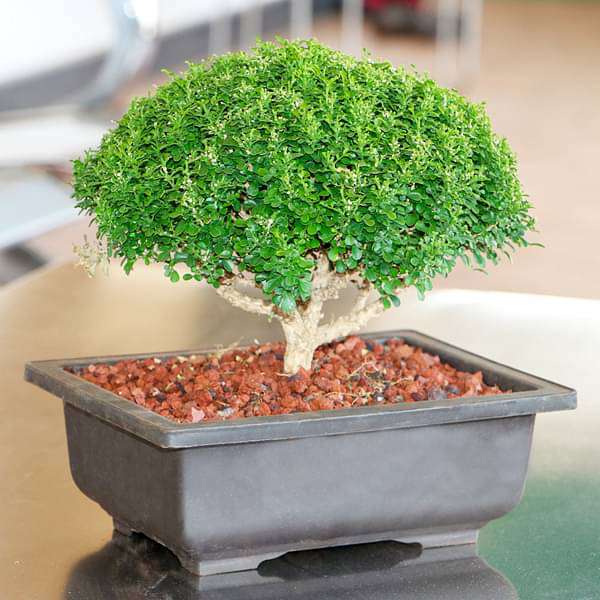
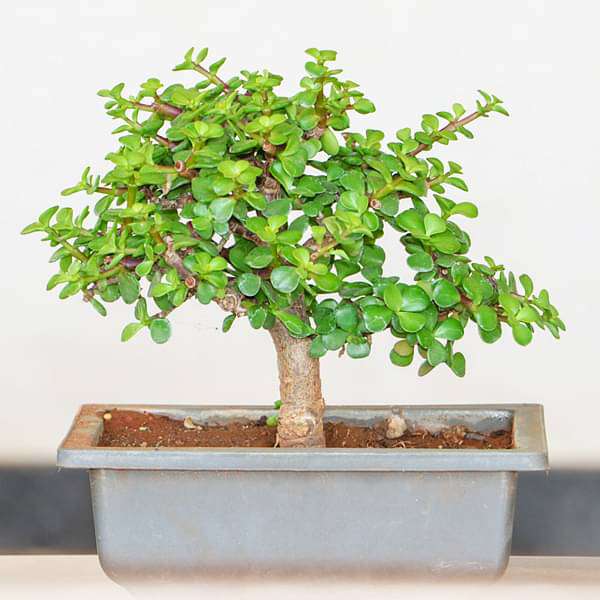
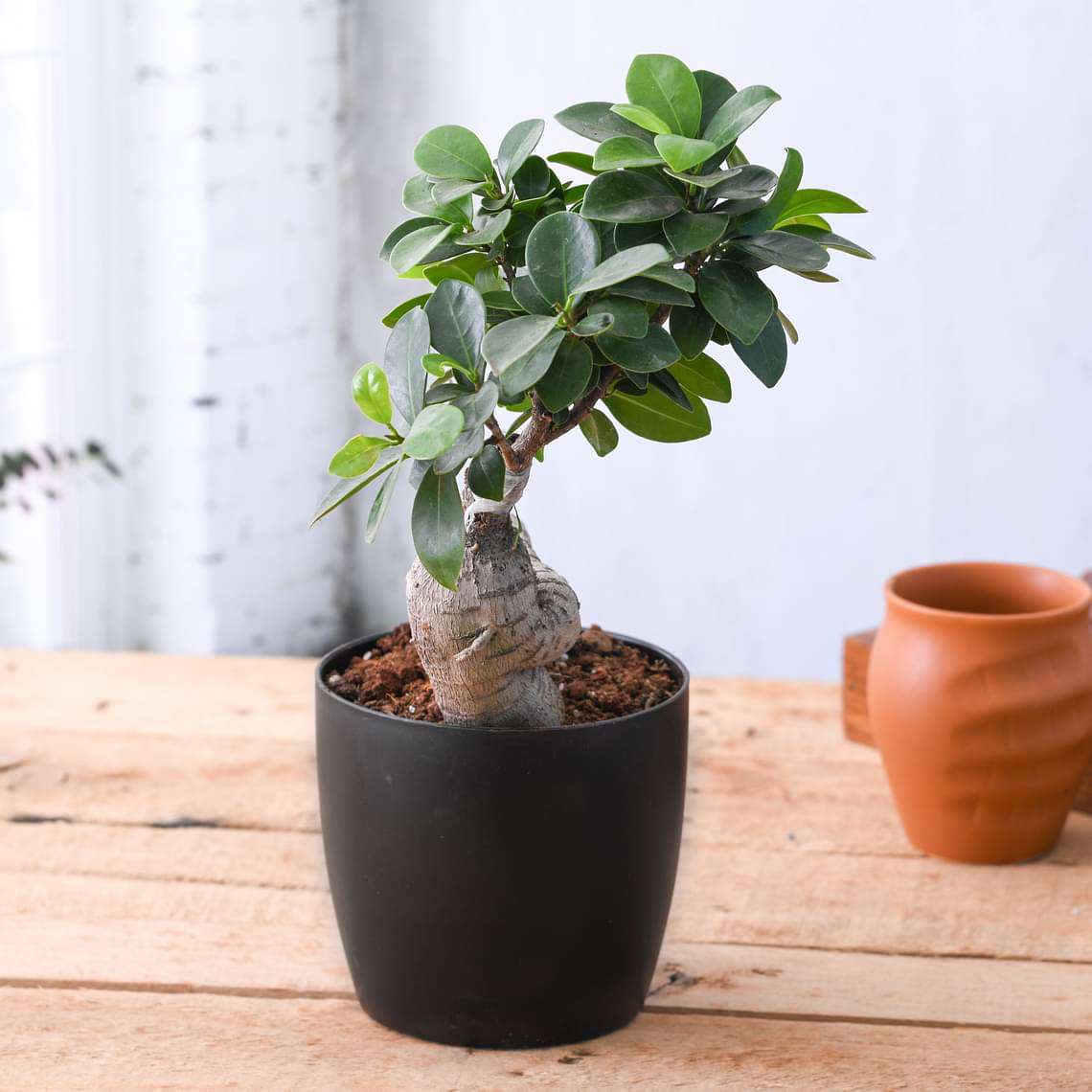
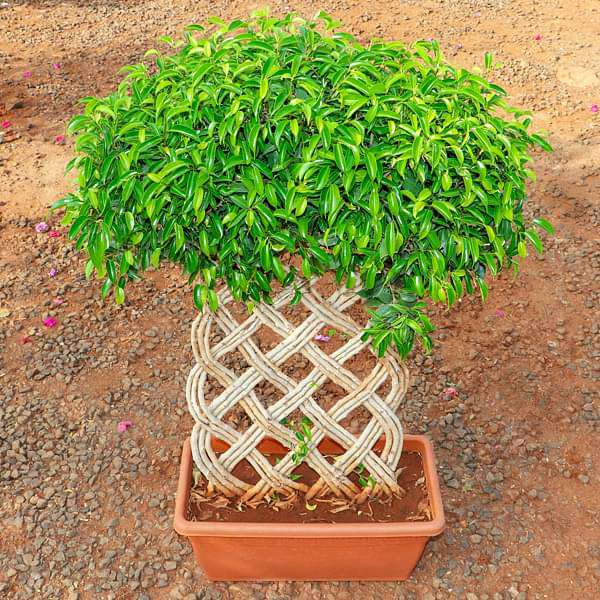
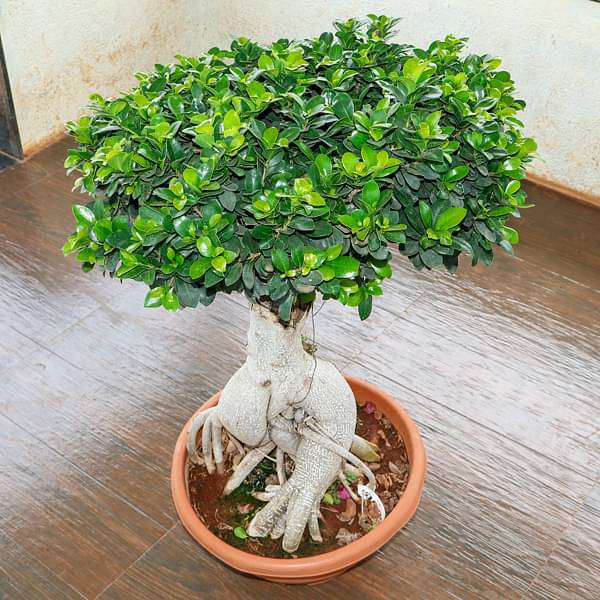
Reviews
There are no reviews yet.